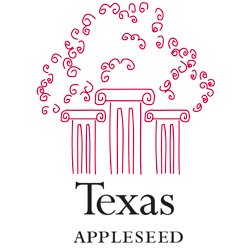


Indiana Department of Education Announces Recipients of 2018 School Improvement Grants

INDIANAPOLIS – The Indiana Department of Education (IDOE) announced today recipients of the 2018 School Improvement Grants. Over $5.3 million will be allocated to six schools and are made available to support student achievement in Title I schools.
“School Improvement funding is critical in supporting high-poverty schools in addressing low student achievement,” said Dr. Jennifer McCormick, Indiana Superintendent of Public Instruction. “I am grateful to our awarded recipients as we work together to create academic success for Indiana’s students.”
School Improvement Grants are federally funded and were enacted under No Child Left Behind. Alternate school improvement funding streams will be utilized in the future in accordance with Indiana’s Every Student Succeeds Act. Funds were awarded through a competitive process to eligible schools who demonstrate a strong commitment to raise low student performance.
For more information regarding the 2018 School Improvement Grants, including a list of grantees, please visit: https://www.doe.in.gov/sig.

MDE Helping Districts Develop Effective Educator Workforces

Contact: Martin Ackley, Director of Public and Governmental Affairs 517-241-4395
Agency: Education
February 2, 2018
LANSING – The Michigan Department of Education (MDE) is leading an effort to support struggling school districts to recruit, hire, and support teachers to meet the needs of the students in those districts.
Nationally, and in Michigan, there is growing concern over the number of teachers entering and leaving the workforce. A consistent challenge that many school districts face is not having teachers in all their classrooms, according to State Superintendent Brian Whiston.
“If a school district doesn’t have enough teachers for their classrooms, it results in large class sizes and students aren’t provided with the kind of focused instruction that will help them learn,” Whiston said.
Ensuring that Michigan has an adequately staffed education workforce requires MDE, local districts, Educator Preparation Institutions, parents and communities to work together as partners.
The strategies the Michigan Department of Education is deploying, in addition to the recommendations for other partners, are articulated in MDE’s Educator Staffing Strategic Plan and span: recruitment into the profession, preparation & certification and staffing & retention.
While these efforts support all schools, MDE is also focusing additional support on the state’s new Partnership Districts – those districts with the lowest-performing schools identified earlier this year – to address any teacher shortages in those districts.
For Partnership Districts, MDE is engaging in on-site technical assistance meetings to discuss workforce challenges and determine ways to address staffing needs, providing flexibilities and helping reach creative long- and short-term solutions; assisting with the development of strategic partnerships between educator preparation providers and schools to develop recruitment pipelines based on schools’ needs; and collaborating with education organizations to coordinate support efforts.

Secretary DeVos Announces New Student-Centered Funding Pilot Program
Washington — U.S. Secretary of Education Betsy DeVos today announced new flexibility for school districts to create equitable, student-centered funding systems under a pilot program authorized by the Every Student Succeeds Act (ESSA).
“This is a great opportunity for local district leaders to put students first,” said Secretary DeVos. “Instead of relying on complex federal rules to allocate funds, local leaders can use this flexibility to match funds—local, State or Federal—to the needs of students.”
The flexibility will allow school districts to combine eligible Federal funds with State and local funds in order to allocate resources to schools based on the number of students and the corresponding level of need. This type of system, often called “student-centered funding” or “weighted student funding”, is widely considered to be a modern, transparent and quantifiable way to allocate resources to the students most in need.
Previously, inflexible rules guiding the allocation and use of Federal funds made it difficult for school districts to create student-centered funding systems using Federal, State and local funds. School districts awarded flexibility will be relieved from Federal funding rules that would otherwise prevent them from implementing a student-centered funding system. ESSA provides for up to fifty school districts to receive the flexibility during the first three years of the program.
School districts that receive the flexibility are expected to design and implement a student-centered funding system that meets all statutory requirements of the pilot program, including the use of weights that allocate substantially more funding to students from low-income families, to English learners and to any other educationally disadvantaged student group identified by the school district.
School districts that receive the flexibility must also provide an assurance that parents, teachers, school leaders and other relevant stakeholders are consulted in the development and implementation of the student-centered funding system.
The application will open on February 7, 2018. For applicants intending to use the flexibility during the 2018-2019 school year, the application is due by March 12, 2018. For applicants intending to use the flexibility during the 2019-2020 school year, the application is due by July 15, 2018.
Link: https://www2.ed.gov/policy/elsec/leg/essa/scfp/studentcentered.html
Frequently Asked Questions
1. Who may apply?
All local educational agencies (LEAs) are eligible to apply. The Department is authorized to award flexibility to 50 LEAs.
2. How do you apply?
The application will be available for download from the Department of Education website beginning February 7, 2018. Completed applications can be submitted to weightedfundingpilot@ed.gov.
3. What is being awarded?
The program will award flexibility only. It does not include a financial award.
4. When is the application due?
For LEAs that indicate on their application that they plan to use the flexibility during the upcoming 2018-2019 school year, the application is due by March 12, 2018. For LEAs that indicate they plan to use the flexibility during the 2019-2020 school year, the application is due by July 15, 2018.
For LEAs that will not use the flexibility until the 2019-2020 school year, the time between award and use may be used for planning.
5. When will the flexibility be awarded?
The Department intends to award the flexibility on a rolling basis, with those LEAs that apply to use the flexibility during the 2018-2019 school year receiving the earliest award notices.
6. Where can I go for additional information?
Prospective applicants can email weightedfundingpilot@ed.gov with questions or comments.
Please consult Title I, Part E, Section 1501 of the Elementary and Secondary Education Act (ESEA) as amended by the Every Student Succeeds Act (ESSA) for all applicable statutory requirements for participation in the program.

PENNSYLVANIA: Act 45 Program: Quality School Leadership Identification (QSLID) Process
The Pennsylvania Department of Education (PDE) is offering a training opportunity to districts seeking a competency-based approach to hiring principals. Registrants may elect to learn 30 Act 45 hours for participation in the training.
Research tells us that hiring the right principal is critical to school improvement, particularly in the lowest performing schools. With the right principal in place, student achievement can dramatically advance, and schools can retain effective teachers. Principal leadership is the second most influential school-level factor impacting student learning; no school has ever turned around without a strong principal leading the way. Securing the right principal lends itself to consistent leadership. The Quality School Leadership Identification (QSLID) process is an opportunity to create a hiring system that will retain effective school leaders.
PDE and the American Institutes for Research have developed a process for school districts seeking a competency-based approach to hiring principals in turnaround and non-turnaround school contexts. While QSLID was originally designed for the hiring of principals, a parallel process has been designed for the hiring of teachers. Upon completion of the course, participants will walk away with a complete hiring process and district-specific documents and protocols for both teachers and principals.
This program includes one day of face-to-face training, pre-scheduled webinars, journal/feedback reflections, and documentation of QSLID implementation.
Note dates and locations below:
- PaTTAN Malvern – March 13, 2018 (Snow date: March 19)
- Baldwin-Whitehall School District – March 5, 2018 (Snow date: March 27)
To register: Contact Melanie Novak at melnovak@pa.gov
Registration deadline: February 9, 2018
Questions? Contact Jean Dyszel at c-jdyszel@pa.gov

MICHIGAN: Gov. Snyder’s MiSTEM Advisory Council Awards $2.85M to 34 STEM Projects
Contact: Martin Ackley, Director of Public and Governmental Affairs 517-241-4395
Agency: Education
LANSING – Thirty-four Science, Technology, Engineering and Mathematics (STEM) programs are sharing $2.85 million in state grants from Governor Rick Snyder’s MiSTEM Advisory Council, the Michigan Department of Education (MDE) announced today.
The state Legislature set aside $2.85 million in 2017-18 to distribute grants up to $100,000 for the implementation of STEM programs listed in the STEMworks database. The MiSTEM Advisory Council selected the awardees, whose funding ranges from $24,000 to $100,000, from 134 applications seeking more than $10 million. The applications came from local and intermediate school districts (ISDs), universities, and STEM providers
“STEM education is critically important to a student’s success later in life,” Governor Snyder said. “Thank you to my partners in the state Legislature and the Department of Education for ensuring that more Michigan students will have access to these STEM skills.”
The MiSTEM Advisory Council said in a statement:
“The Council would like to thank the Governor for the leadership and vision to propel STEM education down a new and exciting path. The legislature has stepped up to the challenge and appropriated funds to support this shift in culture, enabling STEM programming around the state to benefit from proven best practices.
“As proud as we may be about this initial success, we are even more encouraged by the widespread potential that will be harnessed and directed toward the further advancement of STEM education for all of the students throughout the state.”
State Superintendent Brian Whiston said the grants’ STEM focus will help Michigan become a Top 10 education state in 10 years – the central goal of the Michigan Department of Education.
The grants align with the Top 10 plan’s goal of implementing high-quality classroom instruction through a child-centered instructional model with a strategy to enable public schools’ students to engage in integrated STEM programming.
In weighing the applications, the MiSTEM Advisory Council considered reviewer ratings, program type, and distribution across the MiSTEM Network Regions.
Two successful applicants, Oakland Schools and West Shore ESD, received multiple awards to provide professional development in regions other than their own. They are using the funding to build on statewide work underway for several years with seed funding from other sources.
Here is the list of 10 ISDs, 10 local districts and three STEM education provider applications selected for funding:
| Organization | Region | STEMworks Program | Amount |
|---|---|---|---|
| Lakeview Sch. District (Calhoun) | Region 1 – Southwest Michigan | PLTW | $94,340 |
| Oakland Schools | Region 2 – South Central Michigan | Modeling MS Science – Jackson/Lansing | $100,000 |
| Brighton Area Schools | Region 2 – South Central Michigan | PLTW | $53,007 |
| National Inventors Hall of Fame, Inc. | Region 3 – Wayne County | Camp Invention | $100,000 |
| Wayne RESA | Region 3 – Wayne County | Math Recovery | $62,716 |
| Plymouth-Canton Community Schools | Region 3 – Wayne County | PLTW | $74,339 |
| Detroit Public Schools Community District | Region 3 – Wayne County | A World In Motion® (AWIM) | $97,730 |
| Iridescent | Region 3 – Wayne County | Iridescent | $91,382 |
| Macomb ISD | Region 4 – Macomb County | Math Recovery | $53,737 |
| Oakland Schools | Region 5 – Oakland County | Modeling Biology | $100,000 |
| Oakland Schools | Region 5 – Oakland County | Modeling Chemistry | $100,000 |
| Genesee ISD | Region 6 – Genesee, Lapeer, St. Clair Counties | Math Recovery | $98,406 |
| Shiawassee Regional ESD | Region 7 – Capital Area | Math Recovery | $99,120 |
| Otsego Public Schools | Region 8 – West Michigan | MiSTAR | $34,160 |
| Kent ISD | Region 8 – West Michigan | Math Recovery | $45,675 |
| Oakland Schools | Region 8 – West Michigan | Modeling MS Science – Muskegon | $100,000 |
| Mason County Eastern Schools | Region 9 – West Central Michigan | Cereal City Science | $100,000 |
| Midland Public Schools | Region 10 – Central Michigan | MiSTAR | $88,784 |
| Sanilac ISD | Region 11 – Thumb | Cereal City | $100,000 |
| Oakland Schools | Region 12 – North East Michigan | Modeling Biology – Roscommon | $100,000 |
| Public Schools of Petoskey | Region 13 – North West Michigan | Full Option Science System (FOSS) | $60,185 |
| Eastern Upper Peninsula ISD | Region 14 – Eastern UP | Cereal City Science – elementary | $93,488 |
| Eastern Upper Peninsula ISD | Region 14 – Eastern UP | Cereal City Science – middle school | $82,474 |
| Oakland Schools | Region 15 – Central UP | Modeling Physical Science – Marquette | $100,000 |
| L’Anse Area Schools | Region 16 – Western UP | Engineering is Elementary | $28,119 |
| Public Schools of Calumet, Laurium & Keweenaw | Region 16 – Western UP | Math Recovery | $24,285 |
| Great Lakes Fishery Trust | Statewide | Great Lakes Stewardship Initiative | $99,166 |
| Muskegon Area ISD | Statewide | Math Recovery | $99,960 |
| West Shore Educational Service District | Statewide | AP Computer Science/Computer Science Discoveries | $668,927
(6 applications total) |
The Legislature created the MiSTEM Advisory Council in 2015. It’s made up of 11 voting members serving at the pleasure of the Governor and four ex-officio legislators appointed from the House of Representatives and Senate.
More information on the MiSTEM Advisory Council Grant

Texas Appleseed’s LSAT Scholarship Kicks Off for 2018
![]()
DALLAS POST TRIBUNE — AUSTIN, Texas — Texas Appleseed, a public interest justice center, is accepting scholarship applications as part of its Diversity Legal Scholars program, aimed at diversifying the legal profession. The program helps low-income students of color expand their law school options through a scholarship that covers the full cost of a Kaplan (LSAT) preparation course, valued at about $1,299 per scholar.
 The scholarship is offered three times a year, corresponding with LSAT test dates. Key dates are below:
The scholarship is offered three times a year, corresponding with LSAT test dates. Key dates are below:
Round 1: Accepting applications now. The application deadline is February 12, 2018. Scholarship recipients would take the LSAT on June 11, 2018.
Round 2: Accepting applications starting May 14, 2018. The application deadline is June 4, 2018. Scholarship recipients would take the LSAT September 8, 2018 or November 17, 2018.
Round 3: Accepting applications starting August 1, 2018. The application deadline is September 5, 2018. Scholarship recipients would take the LSAT January 26, 2019.
Scholarship recipients must be Texas residents and apply to take the LSAT on the designated date that corresponds to their application round. Additional requirements and details can be found at www.texasappleseed.org/diversity-legal-scholars.
According to the latest figures from the Bureau of Labor Statistics, only 4.4 percent of all lawyers in 2016 were Black, 4.7 percent were Asian, and Latinos comprised 5.6 percent of all attorneys. Texas Appleseed has awarded hundreds of Diversity Legal Scholars scholarships since its inception to give applicants a better shot at fulfilling their dreams of law school and entering the legal profession.

MILWAUKEE – MPS Kindergarten Enrollment Fair on February 3rd

TEXAS: TEA Drafts Corrective Action Plan for Special Education
TEXAS — TEA drafts corrective action plan for special education AUSTIN – At the direction of Governor Greg Abbott, the Texas Education Agency (TEA) has drafted an initial corrective action plan regarding the support and delivery of special education services in our state’s public schools. The initial draft addresses all issues identified in a recent federal monitoring report, including the proper identification of special education students and assuring access to appropriate services at the local level.
Commissioner of Education Mike Morath stressed this initial plan is simply a first draft still requiring additional public comment. Before a final plan is submitted to the U.S. Department of Education, TEA will engage in a significant outreach effort over the next two months to hear from special education students, families, educators, advocacy groups, district and school officials, and all others seeking to provide input on the plan.
“This corrective action plan provides the state of Texas the chance to make meaningful, lasting change in how we educate and support children with special needs,” said Commissioner Morath. “We are approaching this planning process with the seriousness that it requires and hope to solicit the kind of collective feedback, support and collaboration that our students deserve as we work to earn back the trust parents place in us for their children. My top priority has and continues to be to improve outcomes for all students in Texas.”
A copy of the draft plan was shared with the Governor’s Office and made publicly available today on the TEA website (https://tea.texas.gov/TexasSPED). Significant actions that are part of the draft plan include:
- TEA would create a suite of resources intended to be shared with the parents of children suspected of having a disability to help fully inform them of their rights to a free and appropriate public education, and accompany those resources with a large outreach effort.
- TEA would roll out a large scale statewide special education professional development system, including multiple opportunities for follow-up support for all educators (general education, special education, and others).
- For students who are found to have needed services and did not receive them, the school system is responsible for providing compensatory services. TEA would identify funds to support effective service delivery.
- TEA would further strengthen its staffing and resources devoted to special education, allowing for greater oversight as well as additional on-site support to local school districts.
TEA will be accepting an initial round of public comments on the draft plan through Feb. 18. A website has been established providing a copy of the draft, an overview of TEA’s outreach efforts with various stakeholders, and an email address to provide comment.
Following the initial round of public comments and stakeholder engagement, a revised draft plan will be available on or around March 1. Additional public comment will be accepted through March 31.
Under the current timeline, the final State corrective action plan would be submitted to the U.S. Department of Education on or around April 18 (pending additional conversations and feedback from federal officials).
To review the draft plan and learn more about providing feedback, visit the TEA website at https://tea.texas.gov/TexasSPED.

New Center for Public Education report finds significant student population left “Out of the loop”
 Nearly 20 percent of the country’s students are enrolled in rural schools, yet are not provided the same focus in national policy or research as students in urban and suburban school districts. “Out of the Loop,” a new report from the National School Boards Association’s (NSBA), Center for Public Education (CPE), finds that poverty, isolation and inequities are exacerbated for rural students by the lack of attention to the unique needs of this considerable student population.
Nearly 20 percent of the country’s students are enrolled in rural schools, yet are not provided the same focus in national policy or research as students in urban and suburban school districts. “Out of the Loop,” a new report from the National School Boards Association’s (NSBA), Center for Public Education (CPE), finds that poverty, isolation and inequities are exacerbated for rural students by the lack of attention to the unique needs of this considerable student population.
While not equally distributed across the country, CPE’s analysis notes, approximately one-half of school districts, one-third of schools, and one-fifth of all students in the United States are in rural areas. Inadequate funding, lower literacy rates, and less access to advanced courses such as AP and STEM classes impact rural students’ achievement, creating significant barriers to their success.
“The unfortunate reality is that there are academic and digital disparities in rural districts and students’ access to robust opportunities therefore can vary widely,” said NSBA Executive Director and CEO Thomas J. Gentzel. “Policymakers have a real opportunity to help level the playing field for rural students, however it’s going to require thoughtful solutions that are tailored to the unique conditions of specific communities.”
In its study of rural students CPE found that:
- Child poverty runs higher in rural counties. Approximately 64 percent of rural counties experience high child poverty rates, compared to 47 percent of urban counties. Further, rural children are more likely to experience extreme and generational poverty.
- Access to rigorous and advanced coursework is limited. Rural schools on average offer half as many advanced math courses as their urban counterparts.
- Although rural students are more likely to obtain a high school diploma than urban students, they are significantly less likely to attend college or earn a degree.
CPE also points out significant hurdles faced by rural districts and schools:
- Hiring and retaining qualified educators is particularly difficult, especially in STEM positions.
- Inadequate funding is a constant challenge. Funding is typically tied to the size of the student population, creating severe operational challenges for districts with smaller student pools. Also, transportation costs can be extensive in counties where students need to be bused long distances.
- Internet access and virtual learning are a challenge as both rural students and their schools contend with slow or no internet connectivity.
“Rural schools face many of the same challenges as their urban counterparts – high poverty and inadequate resources among them,” said Patte Barth, Director of the Center for Public Education. “Yet as our report shows, the proposed solutions for metropolitan settings, such as school choice and extended time in school, don’t necessarily serve the unique circumstances of less-populated communities. Clearly, the nation needs a specific focus on policies and practices that will improve outcomes for the one-fifth of its children who attend rural schools.”
“Every student deserves the opportunity to receive an education that prepares them for future success, whether they live in an urban, suburban, or rural community,” said Gentzel. “This means recognizing the unique challenges facing rural districts and confronting them head on with actions aligned with the research.”
Read “Out of the Loop,” by the Center for Public Education at http://www.centerforpubliceducation.org/ruralschools

 Contact: Press Office, (202) 401-1576,
Contact: Press Office, (202) 401-1576, 
